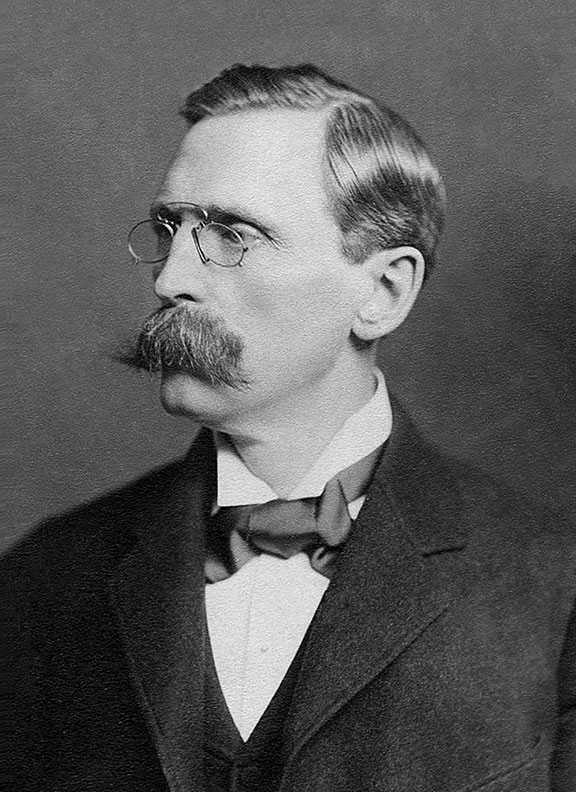« Features
PUSH TO FLUSH. How New York Stole the Idea of the Modern Museum from Berlin Or, How American and British Academia Keep Divulging a Fake History of the Origins of the Modern Museum
By Paco Barragán
I accuse American and British academia and its members of purposely spreading a fake history of the origins of the modern museum. Still today, academics and other art professionals carry the wrong idea of the modern museum and wrongly think of the “white cube” as an American invention authored by MoMA and Alfred Barr, Jr. America, paraphrasing Serge Guilbaut, not only stole the idea of modern art from Paris but also the idea of the modern museum from Berlin. The U.S. was too anxious to step out of the belittling shadow of the European avant-garde in the post-war era. But not content with that, it set out to rewrite the real history of the advent and making of the modern museum. (And I differentiate here between the modern museum and ”universal survey museum,”of which the Louvre is the unchallenged gold standard.)
Ultimately, he who dominates the academic channels ends up controlling the discourse, even if the discourse is fake. I’m a good example of it: if I don´t express myself in English, today’s lingua franca, I wouldn´t be read, or only by a very small minority whose opinion is not determinant. As long as you insist enough on obliterating certain facts and imposing a biased discourse, the fake truth becomes standard urbi et orbe.
Modern museology and the modern museum were invented in Germany, but especially in Berlin, between 1871 and 1933. Why do we as art practitioners today still have no knowledge of it? Why has this fascinating story been totally obliterated? Why is it that we are still not familiar with the names Wilhelm von Bode, Hugo von Tschudi, Ludwig Justi, Alfred Lichtwark, Peter Behrens, Alois Schardt and Alexander Dorner? And what is the ultimate responsibility of lecturers in curatorial studies at institutions like Bard College and The Royal Academy of Arts (RA) in this misinformation campaign?
Strangely enough, since Harald Szeemann reinvented the job, freelance curators have been in charge of museology and exhibition design. In other words, the curator has become not only a storyteller, but also a museologist and exhibition designer. And that is weird because most curators have little idea about museology and exhibition design. The last total curator and heir to his German predecessors was Alfred Barr, Jr., and still, most of the time, he hired German exhibition designers. It is also important to remember that Barr, Jr. himself made two study trips to Germany and only hired assistants that were fluent in German! Curators generally never have studied museology or exhibition design, and they still don’t today. And even when they do so, they study a fake story that doesn´t explain why and how modern museology was invented in Germany. And they also have pretty little understanding of illumination, color theory, interior design et al, which all come into play when setting up an exhibition.
This results in uninspired and repetitive presentations. You only have to go to documenta or the Venice Biennale to see those mediocre exhibition designs! Why? Why don’t curators, museum directors or any other art practitioners have any interest in the history of the modern and contemporary museum and exhibition design if they work with museums and contemporary art centers? Why do curators ignore the fact that the”white cube”hang is just one of many existing museological models?
Something is really wrong in the art world when most of its main practitioners, such as Nicolas Bourriaud, Frances Morris, Chus Martínez, Ralph Rugoff, Carolyn Christov-Bakargiev, Massimiliano Gioni, Iwona Blazwick, Manolo Borja-Villel and many others, have so little idea about the space they work with.
Where was the white cube invented? When? For what kind of art? For what kind of spectator? Why are the art works hung at eye level? Why are they separated? And why are they lit from above? Yes, you have little to no idea! And like most people, you can only reference the ignorant pamphlet written by O’Doherty, who never knew that the white cube was invented in Germany nor what it really meant!
If you look at museum readers and companions with source texts like, for example, Reinventing the Museum. The Evolving Conversation of the Paradigm Shift edited by Gail Anderson, A Companion to Museum Studies edited by Sharon Macdonald or Museum Studies. An Anthology of Contexts edited by Bettina Messias Carbonell, just to mention a few, the case is crystal clear: German museology simply does not exist. So here is the problem that still keeps haunting us: academic sources in English that keep spreading a fake story of the origins of the modern museum.
And of course, German scholars are to blame as well. It was not until the 1990s and 2000s that some art historians like Charlotte Klonk, Jana Baumann, Claudia Rückert, Sven Kuhrau, Nikolaus Bernau and Alexis Joachimides finally took matters into their own hands. But still most writings are in German, and if you are not as lucky as me you still will be kept in the dark, as Anglo-Saxon academia will do nothing to tell the real story behind modern museology and, especially, the white cube. But I will…at some point.
Paco Barragán is a Spanish art theorist, writer and curator based in Madrid. Barragán holds an International PhD from the University of Salamanca (USAL, Spain) with residency at the Alvar Aalto University in Finland. He is the author among others of From Roman Feria to Global Art Fair, From Olympia Festival to Neo-Liberal Biennial (2020), The Art Fair Age (2008) and The Art to Come (2002).




































Leave a Reply
You must be logged in to post a comment.